This review is for the 2013 version of the Optibike Pioneer Allroad (it was the first generation model) and the latest version has also been reviewed here. The new version has a quieter motor that offers a bit more torque. The frame design has changed along with the LCD display panel and front suspension fork. Continue reading here for a look at the older model which may be available used.
Optibike is known for their powerful, off road capable electric bikes that normally use twist throttle like you’d find on a motocross dirt bike. The frames are purpose built, the hubs are internally geared and the price points are quite lofty… The Pioneer Allroad aims to diversify this lineup by offering a new pedal assist mode (with five levels to choose from), a new lighter-duty middrive motor system and traditional chain rings with up to 24 speeds vs. just 14 as seen on the R8 and other bikes they offer. The most attractive qualities of this bike for me are the balanced weight and low center of gravity that the mid-drive motor offers. It also makes the traditional bicycle wheels, tires and gears much easier to service.
The motor itself offers 500 watts of power using a planetary gear design that runs a bit slower than the higher end R-Series bikes. Considering the lower weight of the Pioneer Allroad, at 49lbs, this makes sense and actually keeps the system smoother and quieter in some situations. The feel of this bike can be deceptive because the power and speed offered by the motor are really dependent on which pedaling gear is active. While my experience with hub motor driven bikes is often peppy from the start, no matter what, the mid-drive system here can feel slow and weak if an easier climbing gear is active. Don’t let this throw you off however, it actually improves hill climbing ability and extends the range of the bike – reducing strain on the battery pack. What it does strain however, is the chain and the teeth on the chain rings and cassette if gears are not changed thoughtfully. Imagine climbing a hill and trying to switch gears on your bike? Now imagine a motor is adding force to the system as well.
In addition to increased climbing strength and reducing battery demand and heat, the motor on this bike also offers top speeds in excess of the standard 20 miles per hour that many other ebikes offer. In pedal assist mode five, when pedaling in a harder gear, the motor will continue support up to about 24 mph before cutting out. Pedal assist is activated through a cadence sensor built right into the mid-drive motor casing which keeps it clean and out of the way (verses the little plastic discs used on other ebikes). It offers five levels which can be controlled using the LCD display system on the left handle bar. Level 1 offers ~250 watts of power and with each level up 2 through 4, you get an additional 50 to 60 watts of power until you reach level five at 500 watts.
I like the LCD setup on this bike as it’s simple with just three buttons, easy to read and offers all the standard speed, distance and battery capacity readouts you’d expect. My one complaint is that it’s not removable. Though, if the battery is not on the bike, it will not work because it runs off the main power source. The battery itself is encased in an aluminum cylinder positioned right where a water bottle cage might otherwise be. And indeed, there are no water bottle mounting points on this bike, you’ll have to get a Camelbak or seat rack etc. The battery locks to the frame and is removable for charging or to make the bike lighter for transport. I like the design a lot and didn’t hear it rattling at all during my test rides. The pack offers 37 volts of power and 10.5 amp hours of capacity. That’s pretty decent and they even sell additional batteries for $695 so you could keep one at work if you were commuting. The battery chemistry is Lithium-ion Cobalt which is known for having a high energy density and lasting through many charge cycles.
The Optibike Pioneer All Road is a nice all around bike that offers mechanical advantages over similar models from its competitors. With a bit of practice in riding it can go faster and climb better all while conserving energy and riding fairly quietly and smoothly. The key is in shifting carefully and recognizing that while it may not jump off the line, that all depends on the gear that is chosen… and really, if you do put it in a hard gear and use the trigger throttle it still isn’t going to jump off the line due to the lower gearing, that’s just not what this bike is about. I love the fact that it has a throttle and display that are easy to reach but don’t interfere with gripping the handle bars. I love pedal assist and appreciate that Optibike is now offering it and the system they’ve built is more responsive than other more basic ebikes I’ve tried. With their one year warranty, 90 day guarantee and upgrade path option this is a great option for someone looking to get into ebikes. Keep in mind the frame comes in medium and I’m 5’9″ at ~140lbs for reference, it felt great to me.
Pros:
- High end cadence sensor is built right into the mid-drive motor casing for protection and seems to be more responsive than other pedelec sensors I’ve ridden
- Trigger throttle can be used simultaneously with pedal assist mode
- Mounting points on seat stays and suspension fork for adding fenders or a rear rack
- Mechanical disc brakes, metal pedals and functional kickstand work well
- Battery is removable, can be charged on or off the bike and locks to the frame but the key does not have to be left in when riding
- Mid-drive motor system is more quiet than R series Optibikes but runs at a slower speed, offering less power
- Mid-drive motor leverages the same gear settings that the rider pedals with making it very efficient, extending battery reach and aiding in climbing situations
- Higher top speed of ~24 mph in pedal assist mode at setting 5 when pedaling in faster gears
- Lithium Cobalt battery pack chemistry is very energy dense and offers ~1,000 charge cycles, additional batteries available for extended range
- Bicycle offers both pedal assist and trigger throttle mode, the first Optibike to do so
- Cables are built into the downtube, look nice and stay out of the way
- Very easy to service flat tires, wheels and gears since there are no hub motors getting in the way
Cons:
- Mid-drive motor offers a slower, steadier feel when getting started vs. a geared hub motor
- On the heavier side at 49 pounds, though the weight is balanced well
- Mid-drive motor pulls the same chain as the rider and can make changing gears feel jarring if riding in pedal assist mode, may wear chain and sprocket teeth more quickly than a hub motor design
- No built in lights or fenders, LCD computer display is not removable
- Built overseas vs. in the USA like other Optibikes, keeps price lower
Resources:
- Official Site: http://optibike.com/all-models/pioneer-allroad/
- More Pictures: https://goo.gl/photos/9je1Kkq2hSBqEDHr6


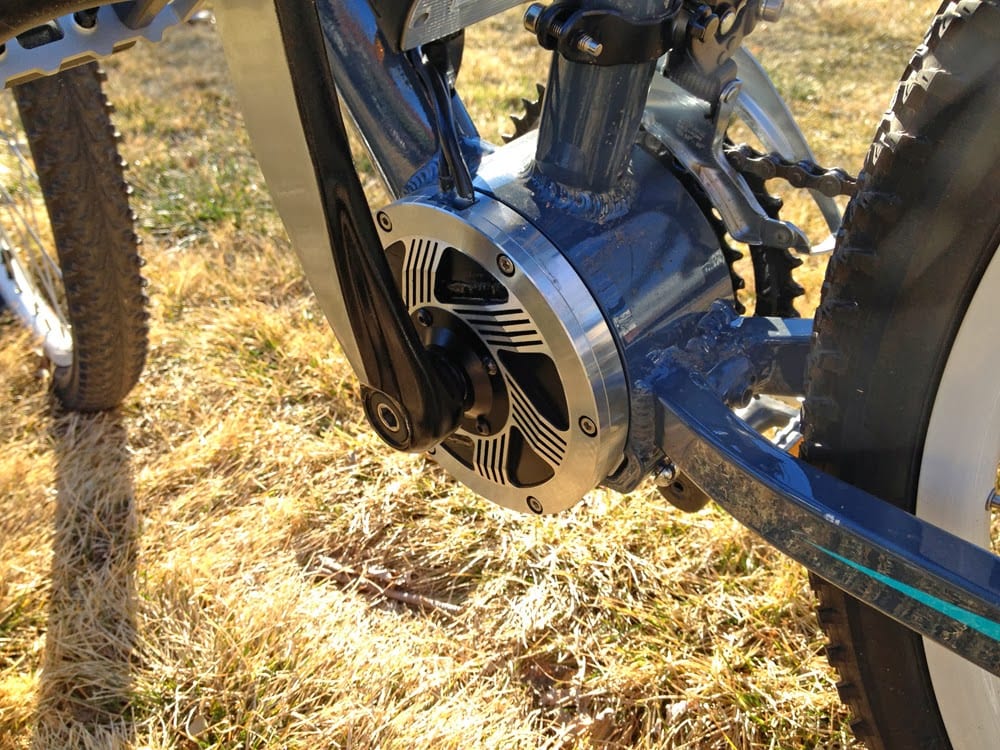
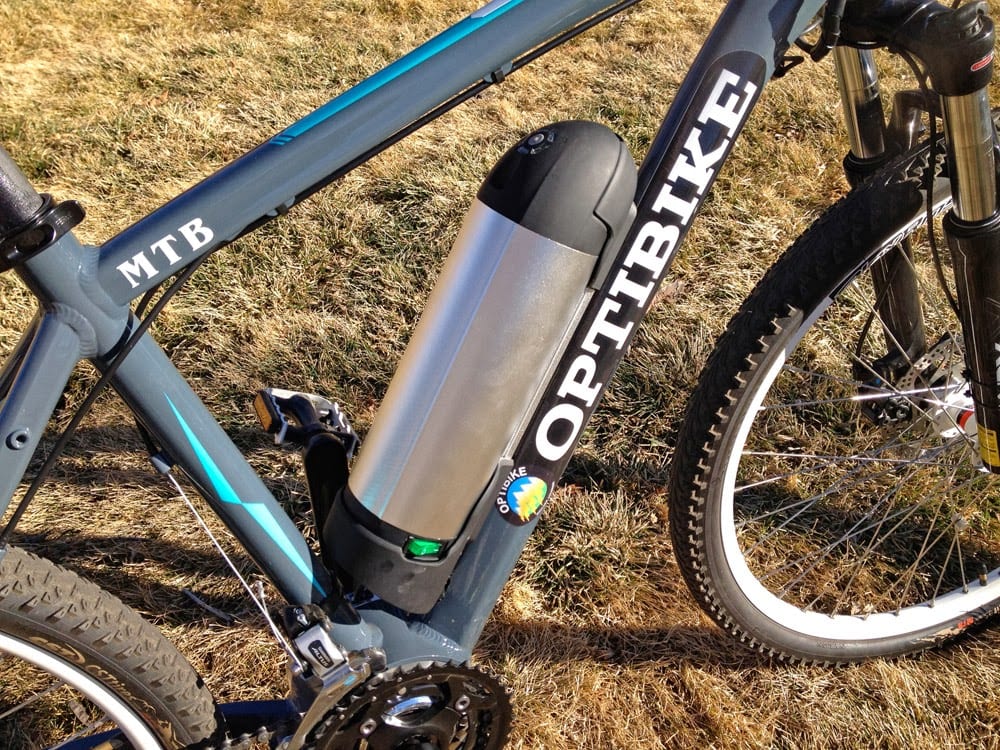
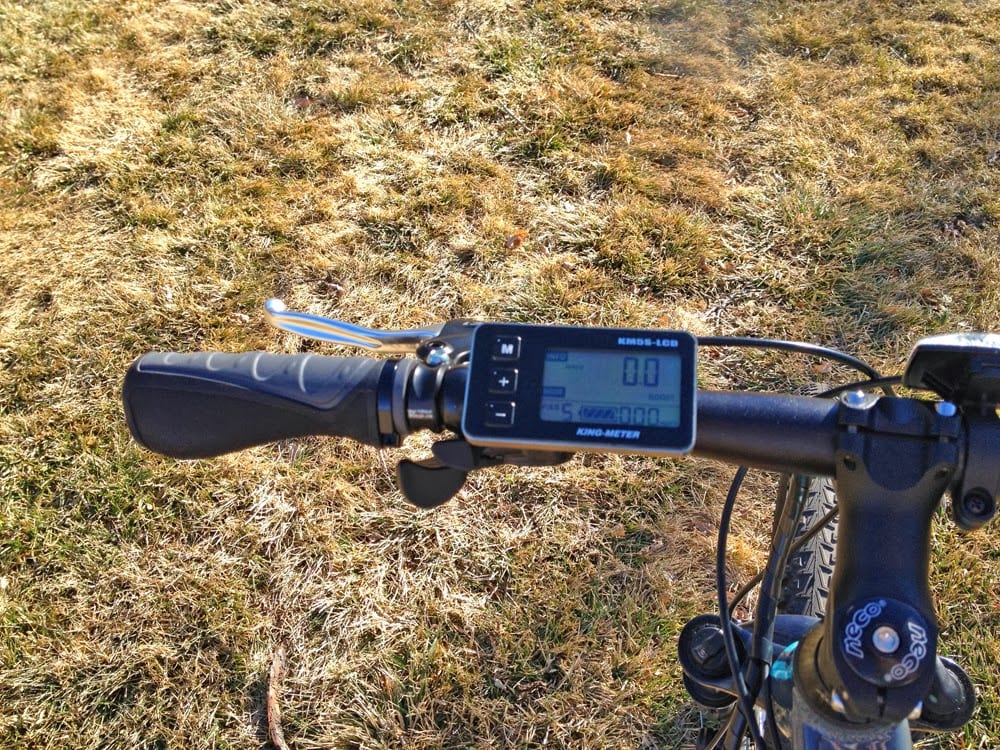

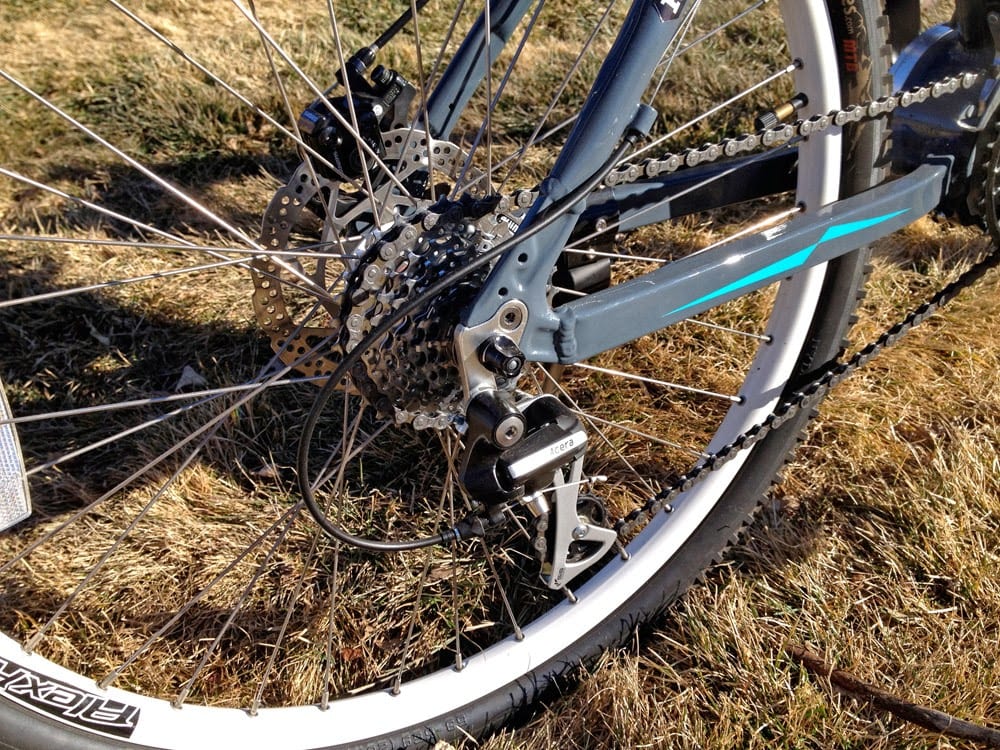
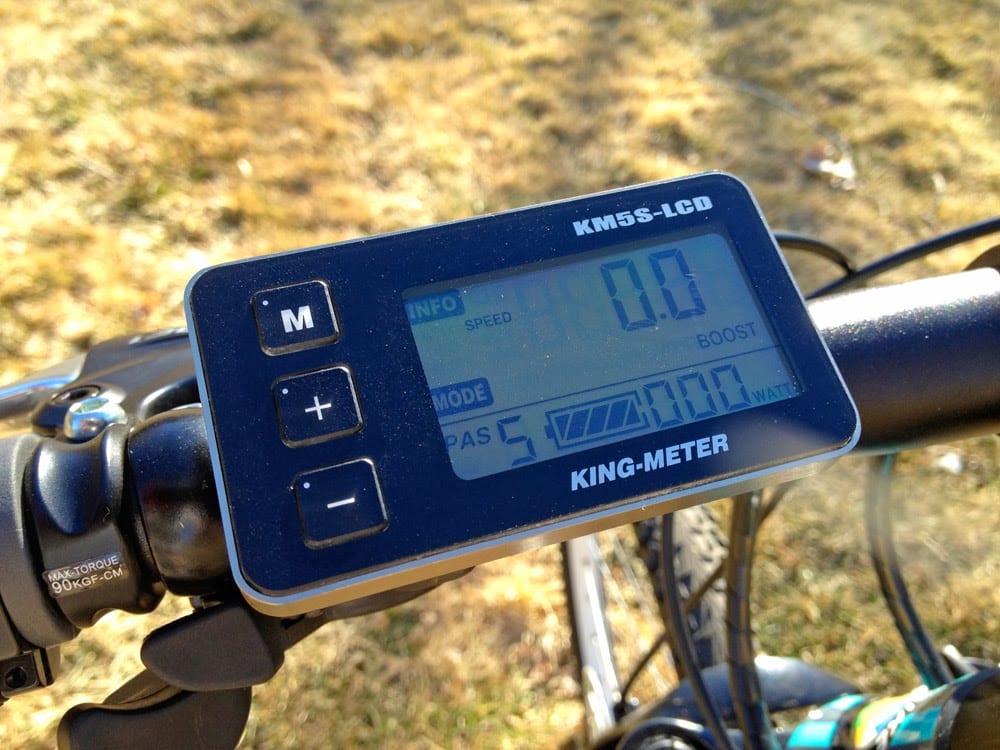
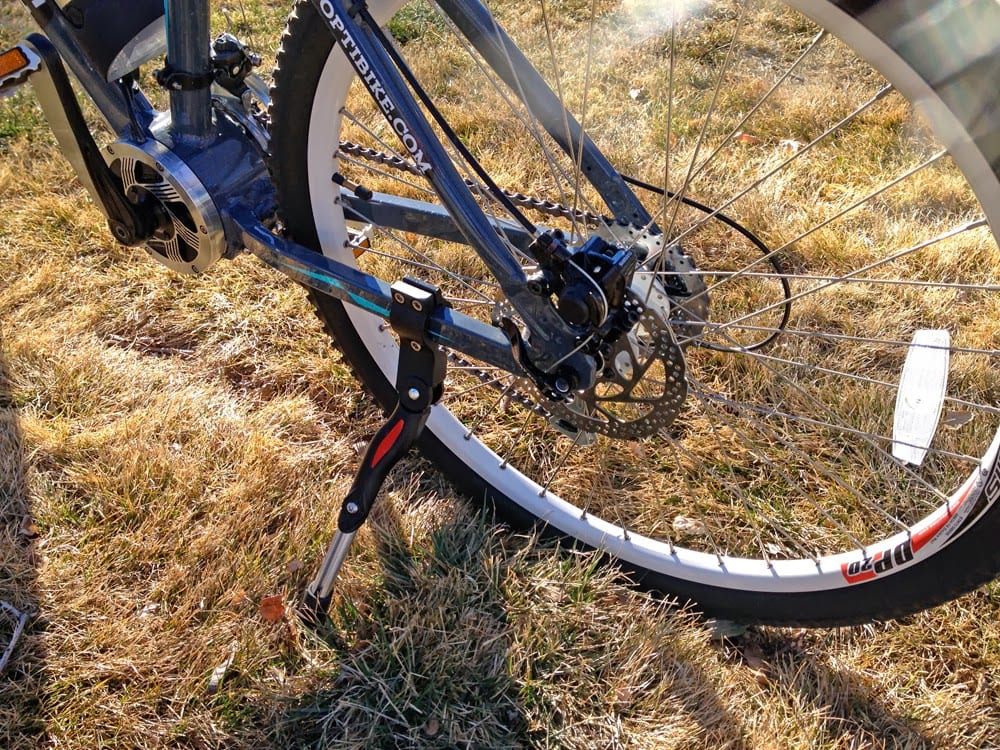

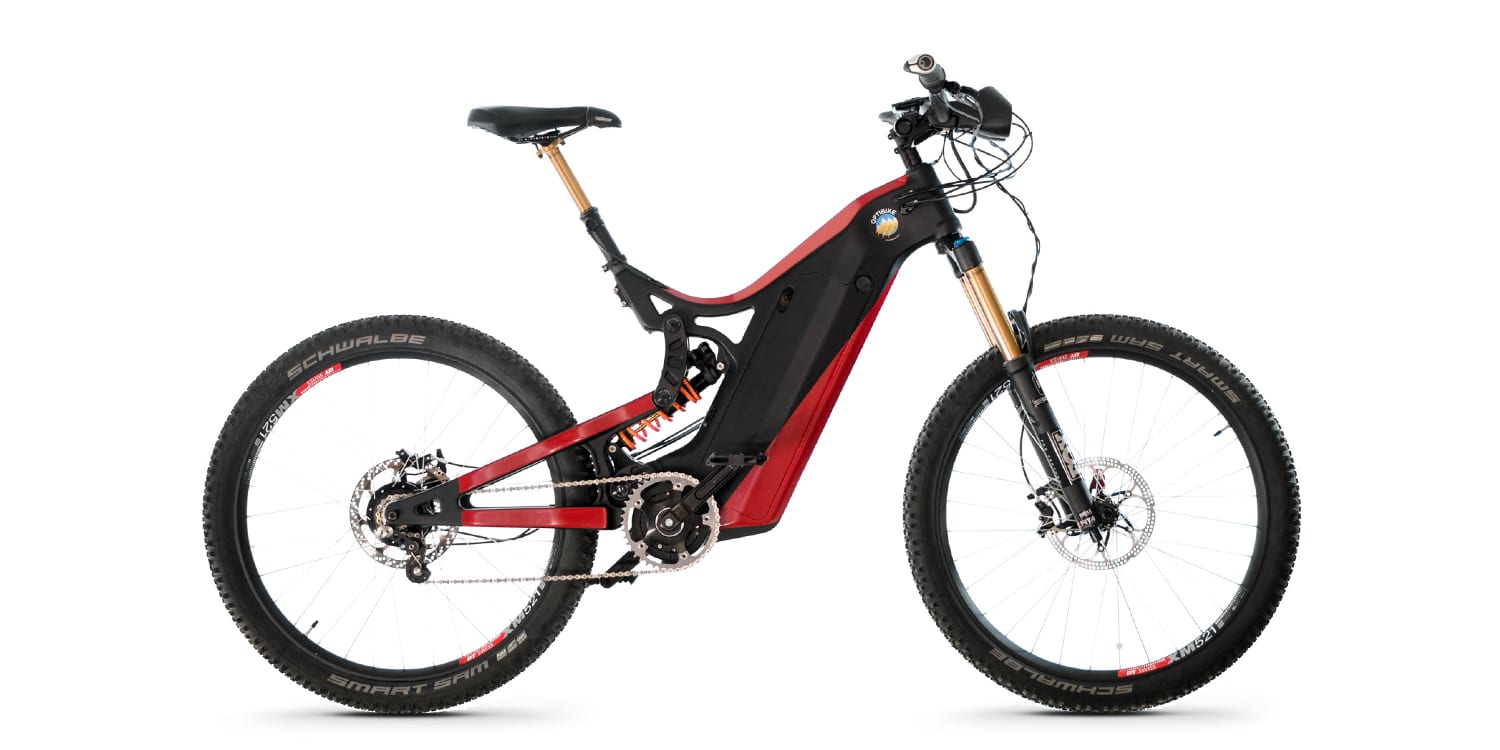

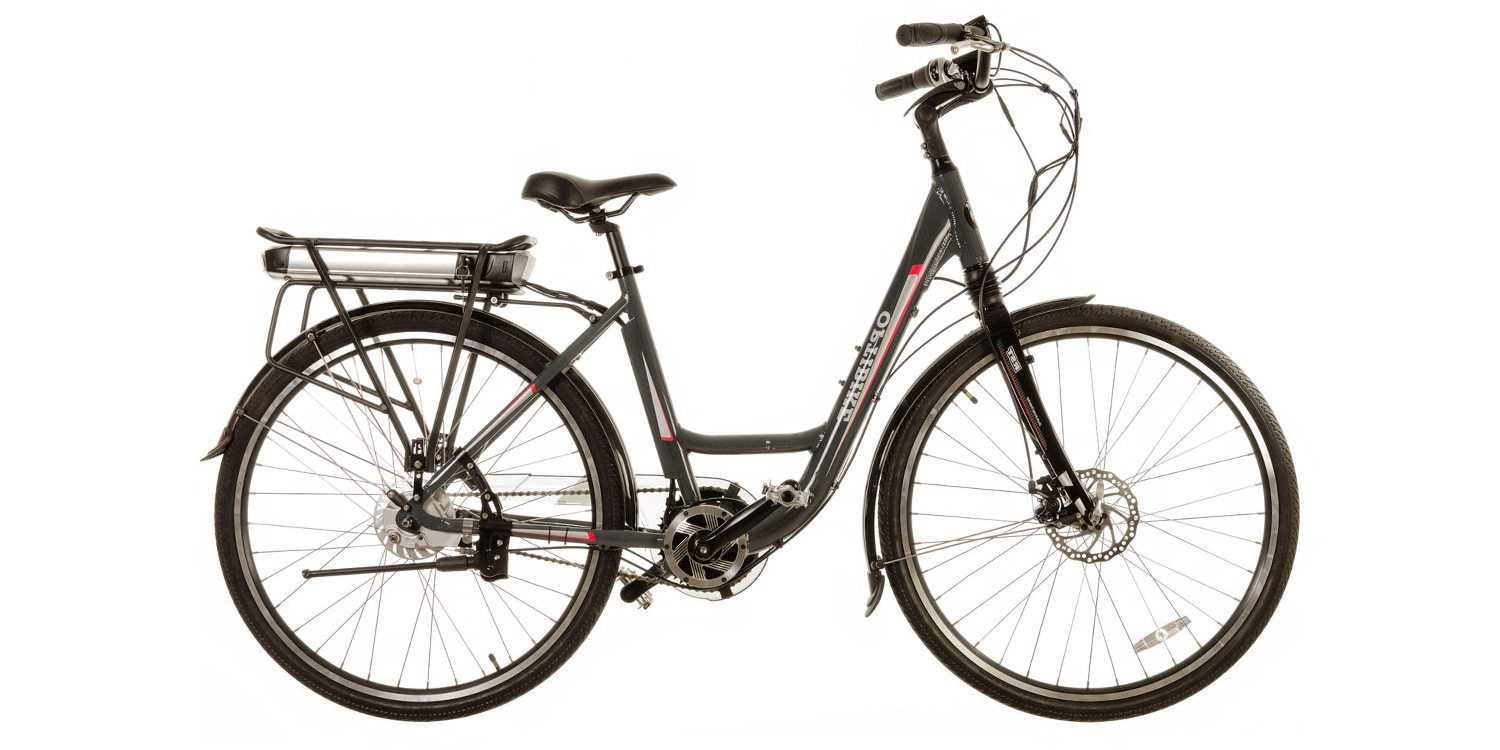
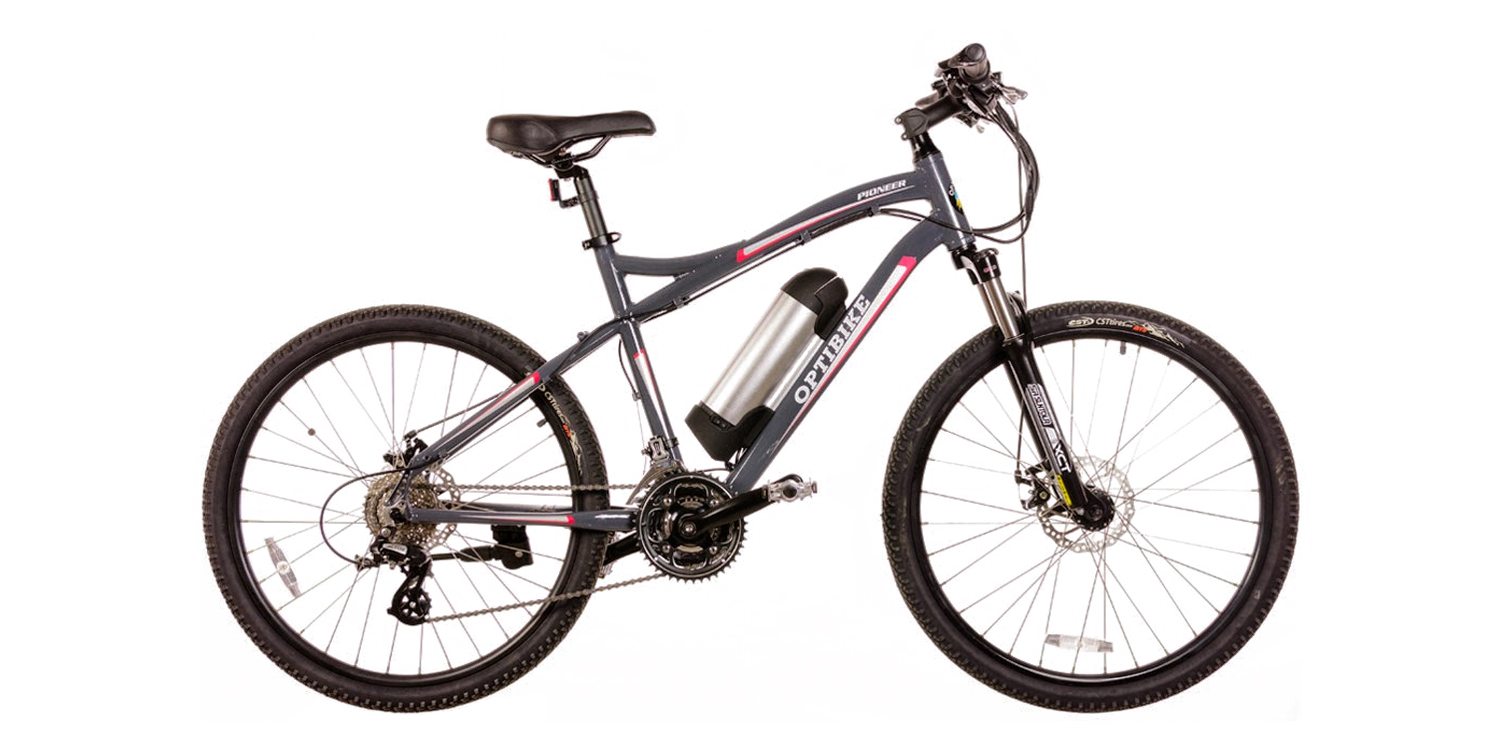
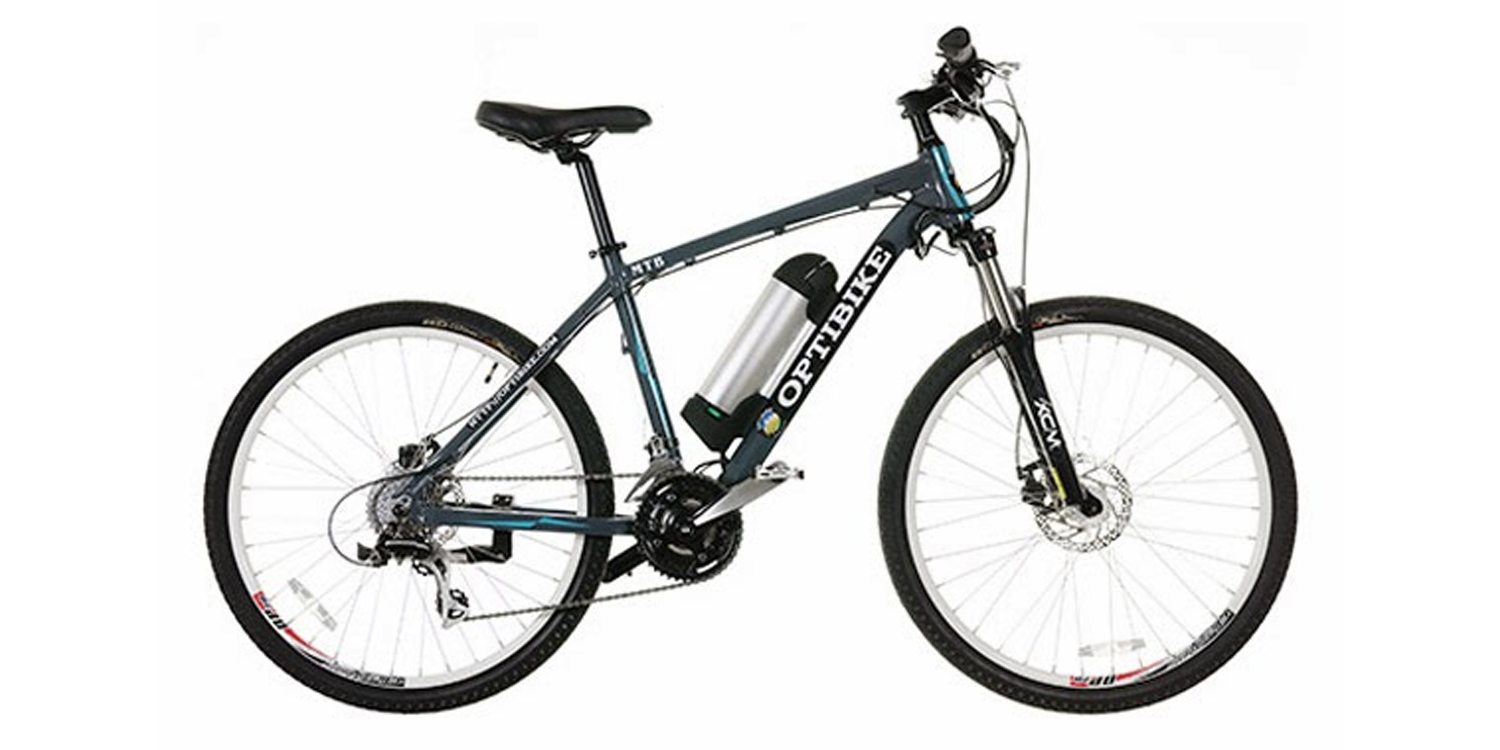
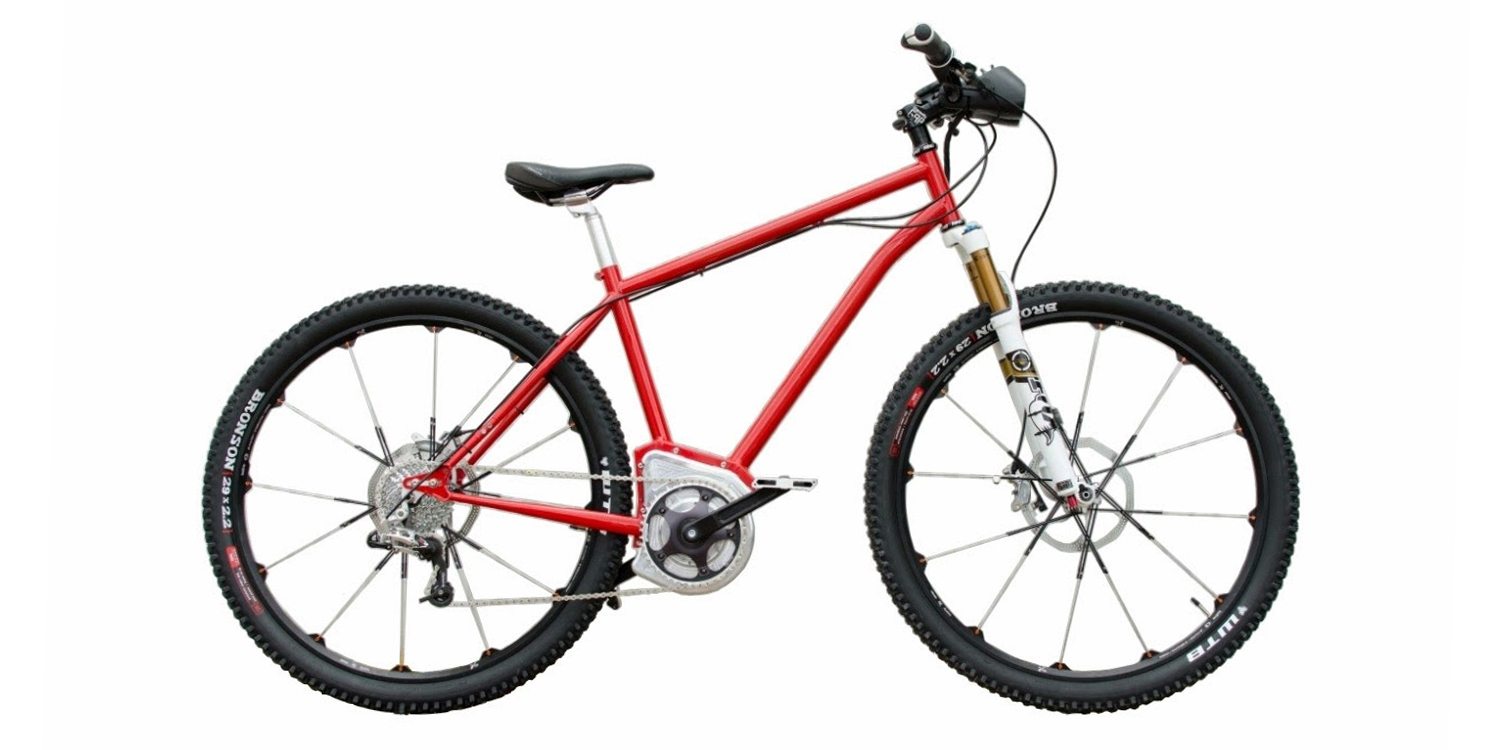
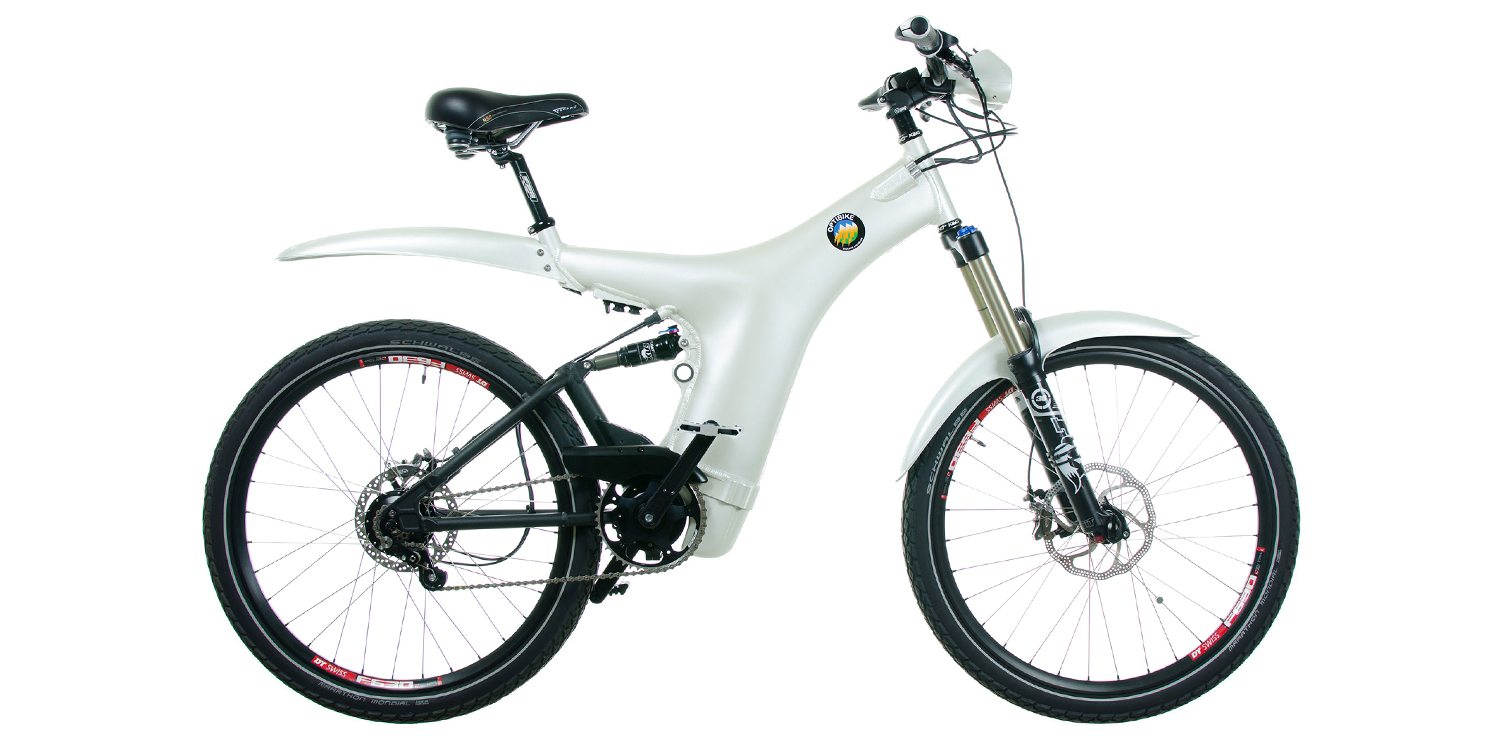
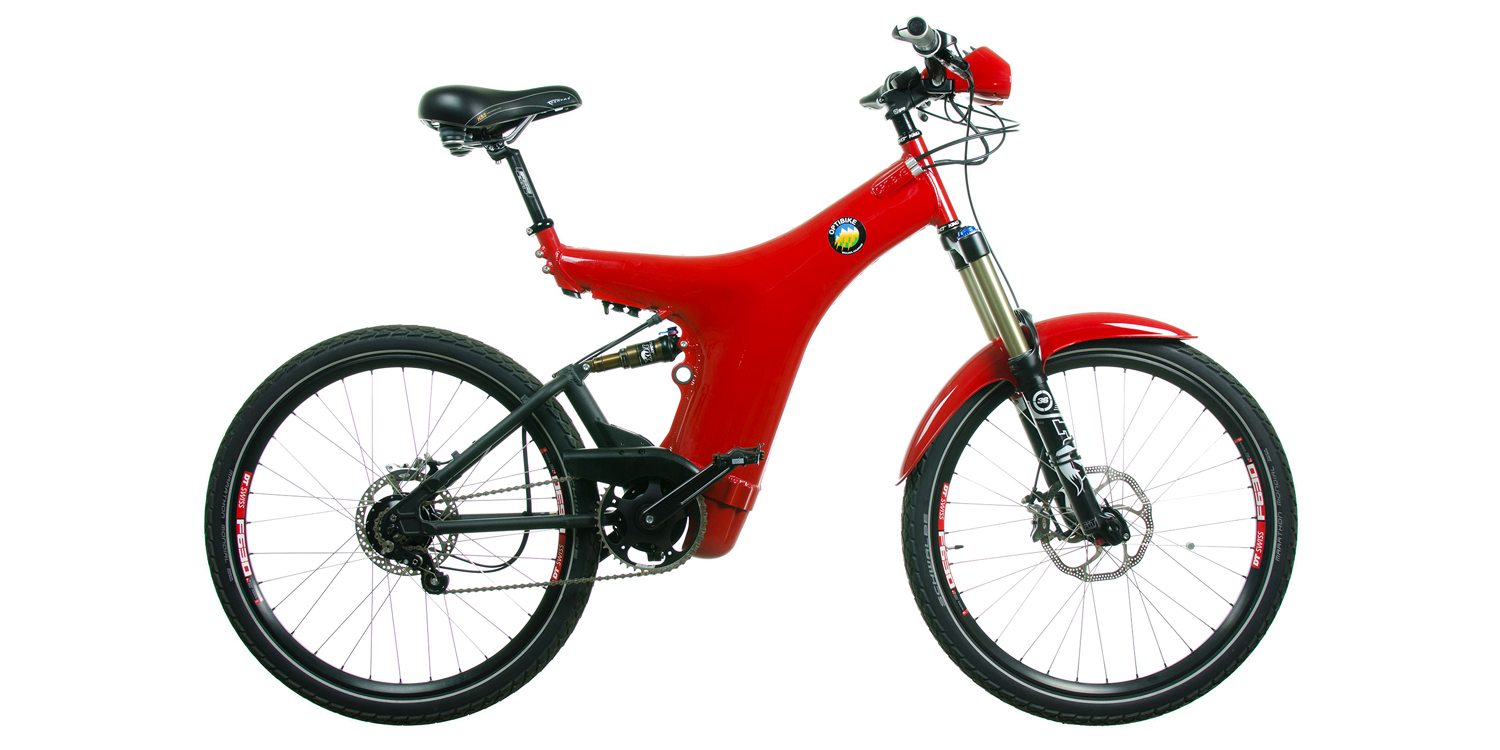

Tom Schantz says
This is the design I truly believe should be the industry standard. Every time I get on my bike I dread the thought of a flat tire on the rear motor tire, plus the weight distribution makes for a far safer ride, having taken two very bad falls on a bike that is rear wheel heavy (motor and battery). Optibike calls it a beginner’s ebike whereas it looks to me like the future of ebikes. Obviously for a rider like me who makes longish trips I would need an extra battery or two. Currently, I travel with two extra 10 pound batteries, so I could carry 2 Pioneer batteries for the same weight as one for my current bike. In fact, the only thing that keeps me from getting this bike is the amount of money I’ve put into my current bike and the four batteries I have for it.
Pred says
Thank you for disclosing your height & weight. I’m concerned about the size of this bike, because I’m 6’1″, and the bike also looks a bit short (top tube) – and only comes in M size. Would you think that an extra inch or 2 in height would make you too tall for this frame? How does the frame feel compare to E3 Peak, which looks like it has a bit longer top tube, and more angle in seat tube?
Many thanks!
Pred
Court Rye says
For you it might be nice that the E3 Peak comes in two frame sizes so you could get the larger one and feel more comfortable. Most ebikes can also have their stem swapped out or seat repositioned to accommodate the rider and that could help you on the Allroad. The E3 Peak is available through dealers across the US so you might be able to demo it and also, if you buy it locally you could get good support directly though Optibike does offer a solid warranty as well.
Nelson says
These reviews are so informative! Thank You.
Couple of questions. I’m looking for a commuter e-bike that excels at hill climbing for the hilly 4 mile (8 mile round trip) commute to work. I have pretty well settled on a 500 watt mid drive. In your reviews of bikes in that category (I.E. evolo Aurora) you strongly recommended the Nuvinci hub to avoid chain damage and rough shifting. But you don’t mention that here?
Also, I can’t get wet or muddy on the way to work and so need a front fender and fender or battery pack that covers the rear wheel. This bike has neither while the aurora has both. Isn’t this important for a commuter? So I need climbing power more than range or speed and also need to stay clean. Your thoughts?
Court Rye says
Hi Nelson, great questions… Most bikes can have fenders and lights added but it’s nice to find one that has these bits from the start so they match etc. That said, the EVELO Aurora ebike has very basic fenders that don’t extend far enough in the front so your shoes and shins will still get wet. Given your needs I would recommend the Orion with a 500 watt motor and the NuVinci and while I haven’t reviewed that bike yet I have covered the very similar iGo Tour here.
To really answer your question about the Optibike Pioneer vs. EVELO and why I didn’t dig into the NuVinci… I’m not sure Optibike offers their Rohloff Speedhub option for the Pioneer and even if they did, it would be so expensive. This bike is meant to be an affordable entry level system and even if you add that nicer pert you might as well upgrade to a better drive system. My favorite from them is the SIMBB 29c because it’s smooth and quiet. Of all the mid-drive ebikes I’ve reviewed I like the Bosch system and Panasonic systems the best because they are smooth, fast and relatively quiet… They only offer pedal assist (which is okay with me) vs. many of the Optibikes. You could make a nice setup of your own with one of the 8Fun mid-drives like the BBS02 or you could buy a bike with this kit already on (I’m working on a review for a bike like this from Volton). I hope this helps you out a little bit. I know the 500 watt EVELO seems stronger than the 350 watt Bosch based on the number of watts but they are setup differently, use different sensors and gear sizes on the front ring so they perform differently, I try to get this across in the videos and writeups but I realize it can be tricky. Another solid choice is the IZIP E3 Peak which could easily have fenders and a rack added and it has a 500 watt mid-drive.
ED says
Thanks for your response on Volton and Railroad. I have been checking out the NTS Fat-Free ebike have you looked into this yet? Thanks once again, ED Gehl
Court Rye says
Great question Ed, the Fat Free looks pretty cool! I have been in touch with Neil Saiki and his wife (founders of NTS Works) and plan to see their bikes either at Interbike or on a future trip to California. We were talking about it in the NTS ebike forums here in the mean time.